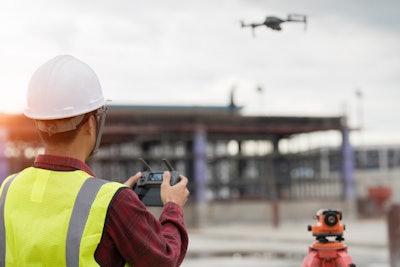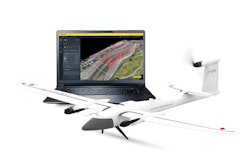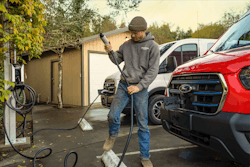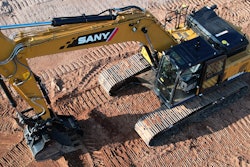
The alarming statistics concerning construction site safety have sparked distress all over the world. One in five deaths among U.S. workers is in the construction industry per OSHA, while BLS says that falls account for 34% of all construction deaths. This means eliminating falls in construction would save more than 300 lives every year.
Technological advancements in unmanned aerial vehicles (UAVs), also known as drones, have the potential to avert construction-related fatalities and injuries due to falls, electrocutions, hazardous chemical exposure, and being struck by dangerous objects. Moreover, certain government laws require construction companies to perform regular site inspections to ensure that they are safe for workers. This process can take from 10 hours to a few days. But with UAV technology, drone building inspections can be completed in a quick 15 minutes.
Here's how drones can increase safety in different aspects of construction work:
1. Construction-related Accident Prevention
Besides being a time-consuming process, inspecting a construction site on foot is also highly risky to workers’ health mainly because of the height involved, heavy equipment, unstable electrical wires, inaccessible areas, etc.
Using drone surveys, engineers and surveyors can proactively avert the risk of injuries or deaths to a great extent by pinpointing potential hazards like the exact location of a heavy object, movement of dangerous equipment, and unstable floors.
2. Improved Inspection Efficiency
Drones can be deployed to identify the damages and repairs needed which is much more efficient than sending workers on heights and close to unknown dangers. It eliminates the risk of making workers climb large scaffoldings or walk across unsafe structures.
Drone building inspections also require less labor and less time. Using UAV technologies like aerial imaging and inexpensive thermal inspections, one can inspect construction structures swiftly and risk-free. All you need are a skilled UAV operator and compatible software to analyze the data.
3. Monitoring Site Progress
Arranging multiple workers to physically monitor a site is now becoming a thing of the past. Drones can send real-time images and videos of the site to the construction managers. This can then be converted to a 3D model which is further compared to previous data to analyze the site’s progress. This is especially helpful when monitoring hazardous areas of the construction site.
Monitoring the site’s progress using UAVs can help the team track if everything is running as per the design plan and schedule. Drones can also be used to monitor the loading-unloading of materials, traffic at the site, and transport, which will ensure that all operations are carried out with safety.
4. Deterring Theft
Construction site theft is a much bigger problem than you thought. As it is littered with high-value items to steal (like lumber, power tools, and appliances), the cost estimates of theft of construction equipment vary from about $300 million to $1 billion, according to the NER 2016 Theft Report.
Drones can give a higher level of security as they can fly over a construction site all day and night, monitoring the storage and material movement to ensure that nothing gets stolen. Drones with motion sensors, night vision, and infrared are even better than surveillance cameras as they can be used to guard hard-to-reach areas as well.
Not only can the video feed be used to alert the managers remotely, but they can also serve as hard proof to prosecute the thieves, if any, in the future.
The use of drones in construction and mining could eventually become a $28.3 billion global market, according to PwC. So, it is about time their use in construction site safety is reviewed to identify and control the potential risks to workers.
Safety professionals, construction site managers, and engineers must come together and integrate UAV technology and its benefits to develop best safety practices at their workplace. This will help ensure the health and welfare of their construction site workers.
 AUAV
AUAV











